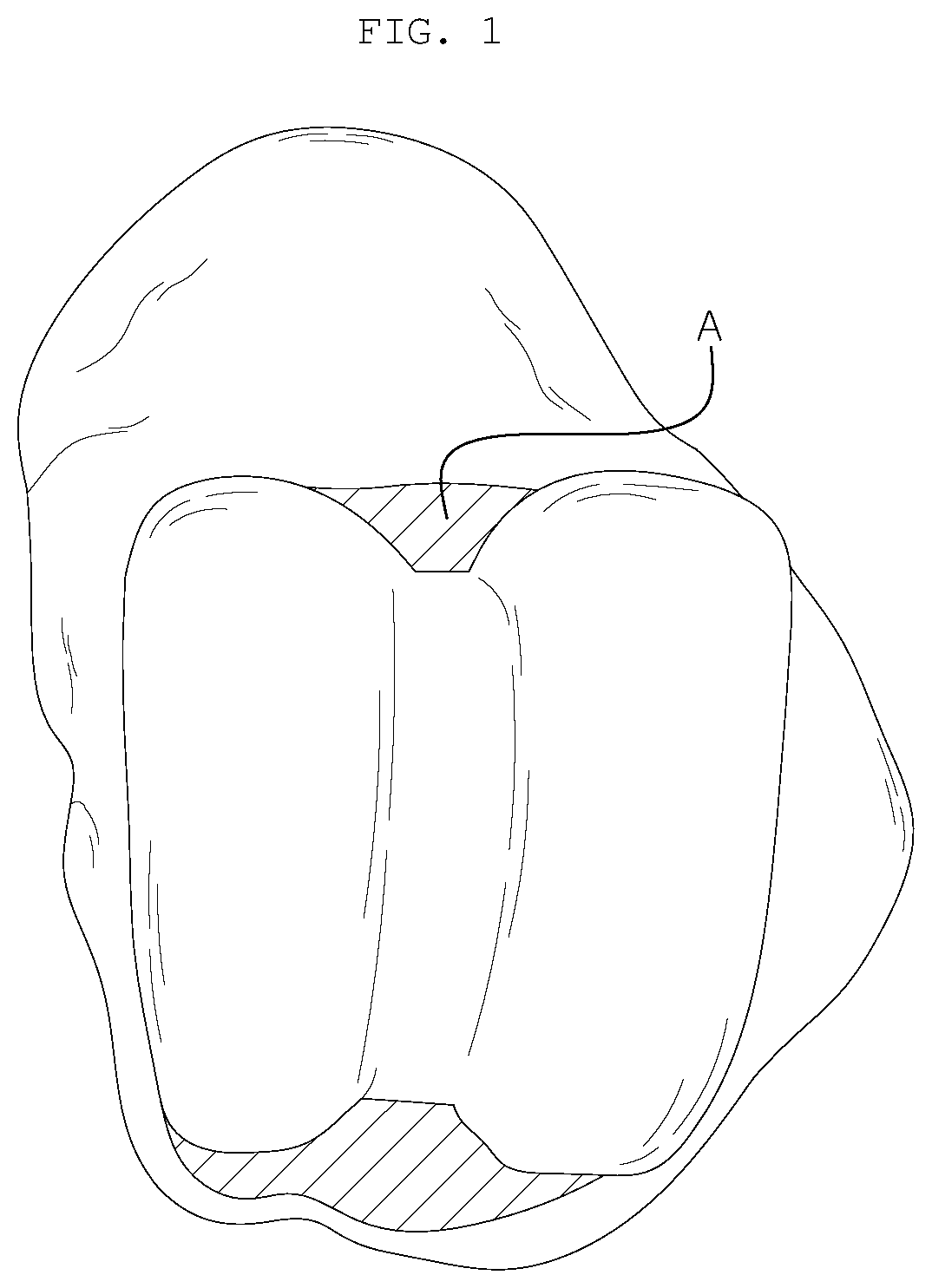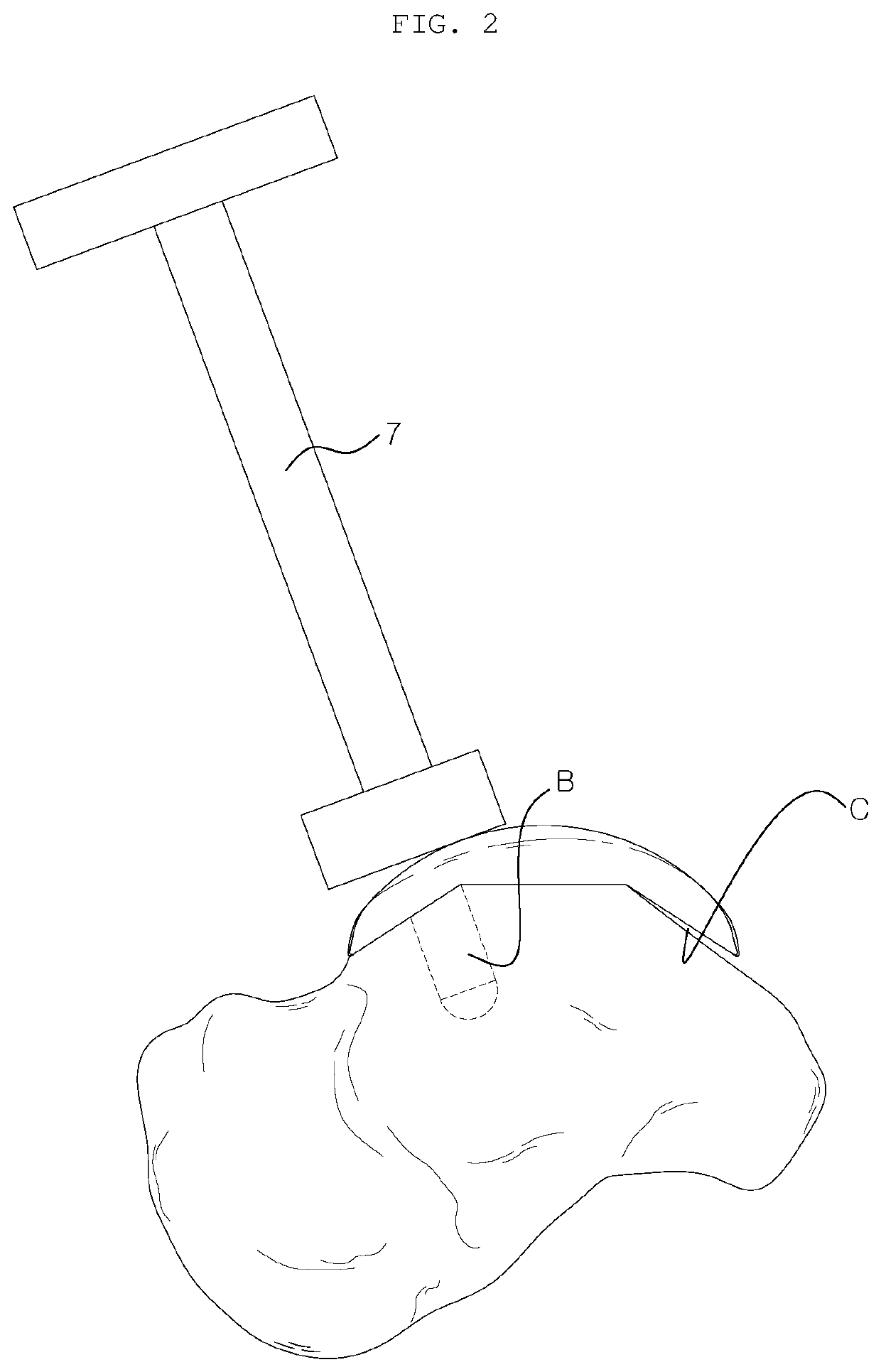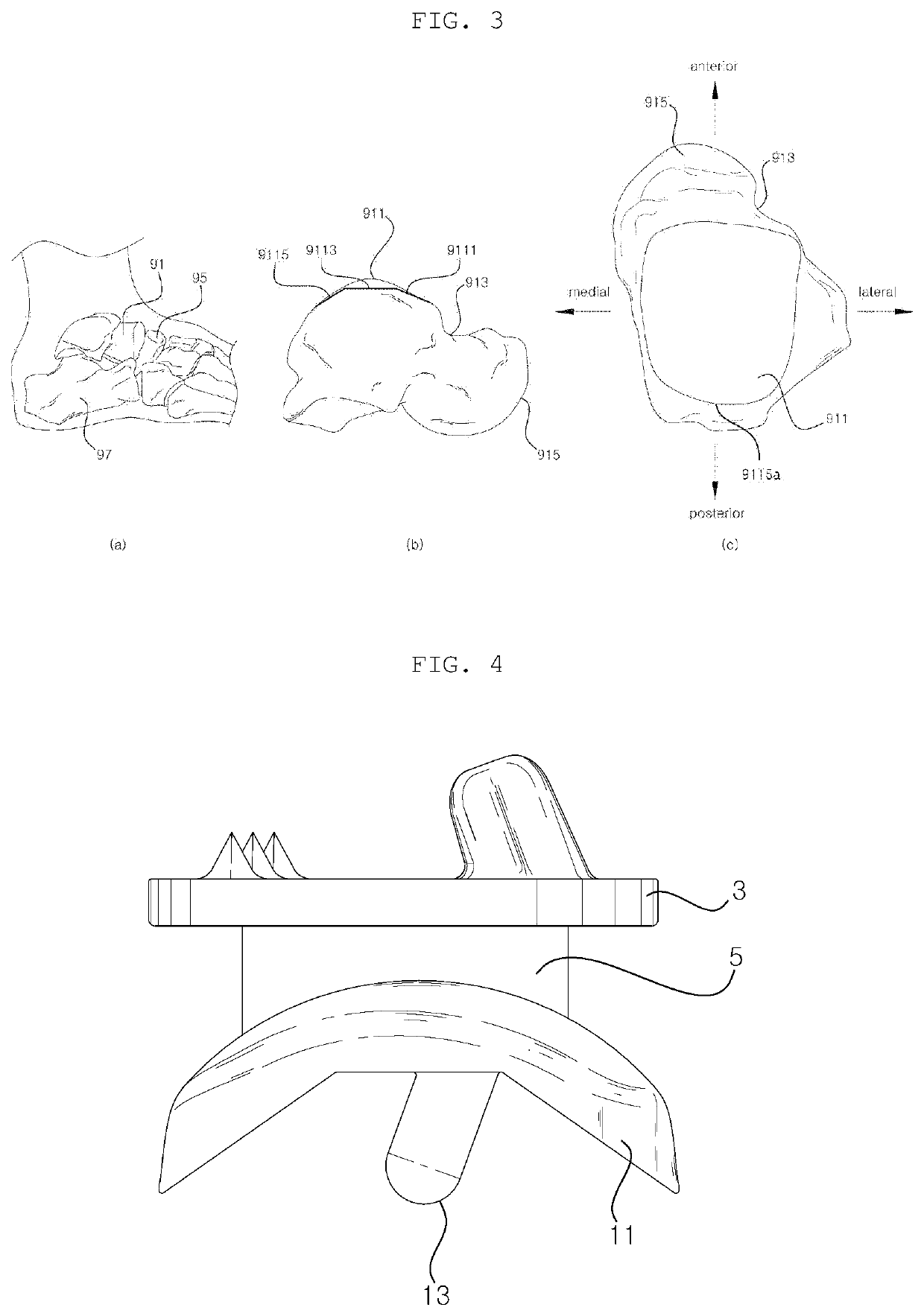Artificial ankle joint talus component
a technology of talus and component, which is applied in the field of artificial ankle joint talus component, can solve the problems of increasing the burden on the surgeon, osteolysis or heterotopic ossification, and the resected surface of the talus cannot be fully covered, so as to facilitate revision arthroplasty, and prevent osteolysis and heterotopic ossification
- Summary
- Abstract
- Description
- Claims
- Application Information
AI Technical Summary
Benefits of technology
Problems solved by technology
Method used
Image
Examples
Embodiment Construction
[0075]Hereinafter, an artificial ankle joint talus component according to the present disclosure will be described in detail with reference to the accompanying drawings. It should be noted that the same components in the figures are represented by the same reference numerals wherever possible. In addition, detailed descriptions of well-known functions and configurations that may unnecessarily obscure the subject matter of the present disclosure will be omitted. Unless otherwise defined, all terms in this specification are equivalent to the general meanings of the terms understood by those of ordinary skill in the art to which the present disclosure pertains, and if the terms conflict with the meanings of the terms used herein, the definition is to be understood according to the present specification.
[0076]Now, an artificial ankle joint talus component of the present disclosure will be described in detail with reference to the accompanying drawings.
[0077]FIG. 1 is a plan view showing...
PUM
 Login to View More
Login to View More Abstract
Description
Claims
Application Information
 Login to View More
Login to View More - R&D
- Intellectual Property
- Life Sciences
- Materials
- Tech Scout
- Unparalleled Data Quality
- Higher Quality Content
- 60% Fewer Hallucinations
Browse by: Latest US Patents, China's latest patents, Technical Efficacy Thesaurus, Application Domain, Technology Topic, Popular Technical Reports.
© 2025 PatSnap. All rights reserved.Legal|Privacy policy|Modern Slavery Act Transparency Statement|Sitemap|About US| Contact US: help@patsnap.com



